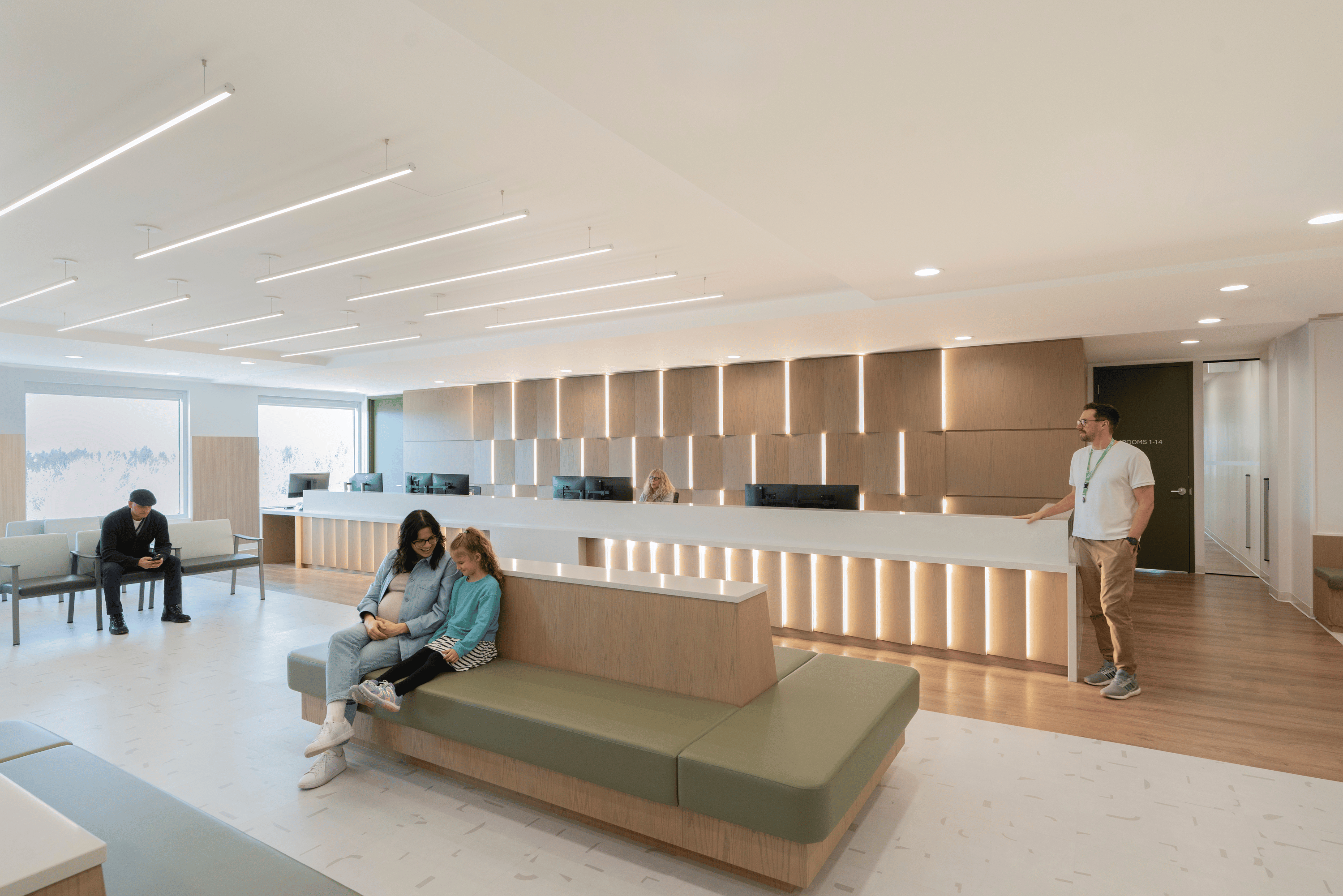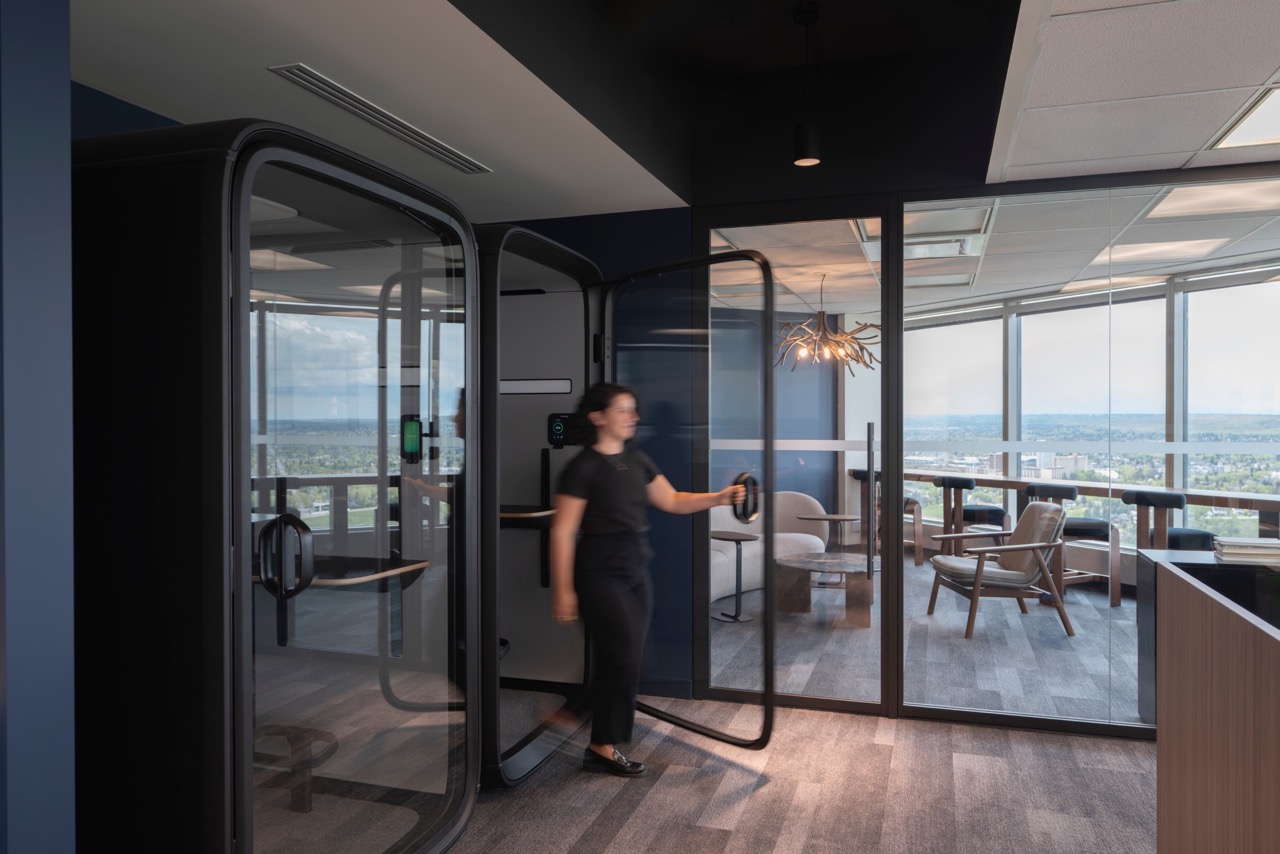Client-centred collaboration in workplace design
The traditional approach to workplace design treated it as a private domain: designers retreated to their studios, emerged with polished proposals, and presented the finished design to clients. But today's most successful projects unfold differently. They’re co-created from the ground up, with clients playing an active role from the start. In this blog post, Project Lead Cindy Tran and Project Designer Jessica Ormita share how client collaboration shapes every phase of the design process.

In 1995, the executive office was a corner space–75 square feet larger than today’s average workspace. Private offices lined the parameter, administrative staff occupied the middle zones, and hierarchies were written into the floor plan itself. Collaboration happened face-to-face, often behind closed doors or in scheduled conference rooms. The teams designing those spaces reflected the industry’s demographic of the time, predominantly homogeneous teams working within established conventions.
Fast forward to today. That same footprint houses flexible workstations, private meeting pods, and collaborative zones. The workforce moves fluidly between home, office, and third spaces, blending full-time staff with remote contributors. AI has woven into daily workflows, reshaping both how work gets done and what kinds of spaces support it. The designers shaping these environments now bring a wider range of perspectives—more women, greater cultural diversity, varied lived experience, and different ways of thinking that expand what’s possible in spatial design.
So if everything about work has evolved—how we do it, who does it, and who creates the spaces for it—then our approach to collaboration must evolve too. Today's workplace complexity requires a fundamentally different method: one that recognizes clients don't just fund the vision, they complete it.
In this blog post, Project Lead Cindy Tran and Project Designer Jessica Ormita share how client collaboration shapes every phase of the design process. With a background in high-end residential design, Cindy brings a layered, story-driven approach to workplace environments. Jessica combines creative problem-solving with a people-first mindset, ensuring spaces work as beautifully as they look. Together, they explore how deeper collaboration leads to more intentional, more human spaces.
Clients as co-creators
The traditional approach treated design as a private domain: designers retreated to their studios, emerged with polished proposals, and presented the finished design to clients. But today's most successful projects unfold differently. They’re co-created from the ground up, with clients playing an active role from the start.
Clients bring irreplaceable expertise to the table. They understand their organization’s challenges, workflow bottlenecks, and cultural dynamics in ways no external team could intuitively grasp. Their input helps surface issues early, unlock alternative solutions, and steer the project toward outcomes that are not only functional, but truly responsive.
This deeper collaboration creates lasting value beyond any single project. Client involvement helps deepen the consulting relationship and bind the client to the design team by promoting familiarity, attachment, and close working relationships (Fu et al., 2023). This collaborative approach consistently produces stronger results, with client involvement showing a direct positive relationship to overall team performance.

Designing with trust
When clients share their organizational challenges, they're revealing workflow frustrations, cultural tensions, and strategic vulnerabilities that most outsiders rarely see. That kind of openness only happens when trust is firmly in place.
At Holland, earning that trust begins with who we are. Our award-winning team brings a breadth of experience and perspectives to every project, allowing us to meet complexity with clarity and care.
Our open studio environment encourages continuous collaboration between teams, with project leads and designers working together to pressure-test ideas and anticipate challenges before they reach the client. This collaborative approach means clients receive more thoughtful recommendations and fewer surprises throughout the process.
By leading with empathy and communicating with clarity, we ensure clients feel supported from the first conversation to the final handover.

A clear and adaptable process
Because we know most clients haven't navigated a commercial design process before, we focus on making the experience as manageable and transparent as possible. From the start, clients receive a visual roadmap that outlines milestones, timelines, and key decision points creating a shared understanding of what’s ahead. Defined phases like Workplace Mapping, Schematic Design, and Programming offer clear opportunities for feedback and decision-making.
We also build in regular check-ins throughout every stage. These meetings provide space for clients to reflect, ask questions , and refine direction, all while ensuring they feel heard at every step. This kind of early and ongoing dialogue allows us to surface potential changes before they become costly or disruptive.
However, every project, no matter how carefully planned, requires room to adapt. Client preferences evolve—sometimes mid-phase or even during construction—and that's natural. With nearly one-third of professionals reporting that miscommunication has damaged their confidence (Kojic, 2025), how we handle these pivots becomes critical. Our team always comes prepared with backup options and design alternates, ready to adjust course while protecting the project's core vision. This responsiveness maintains client confidence, especially on longer timelines where needs naturally shift.

Guidance in the moments that matter
One aspect that consistently surprises clients is the sheer volume of decisions required in a commercial design project. Research shows a negative correlation between pragmatic prospection and decision fatigue, with organizational culture playing an important role in moderating this effect (Rashid, 2024). In these moments, professional guidance becomes invaluable—offering expertise and trusted recommendations that keep the project moving forward while remaining aligned with the client’s vision. This can mean helping clients explore how their ideas can be refined into practical, inspiring solutions that work within the unique requirements of a commercial space. It can also involve navigating considerations like budget, compliance, and functionality in a way that ensures the final design is not only beautiful but also safe, efficient, and future-ready.
Get in touch with us
Collaboration means clients are part of the process from the start. With clear communication and transparent decisions, everyone understands what’s happening and why. Sometimes that means allowing more time for the right choice, other times it’s guiding a key design decision. In every case, trust leads to spaces that fit the organization and the people who use them.
At Holland, collaboration shapes every project. We keep the conversation open, share our expertise, and work with you to create spaces that inspire, perform, and adapt.
Ready to bring your vision to life with a team that values efficiency and collaboration? Get in touch with us today.


